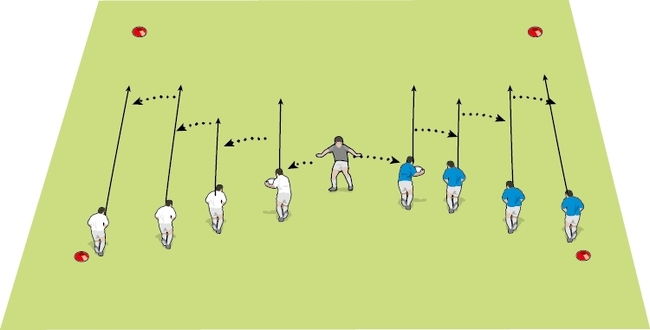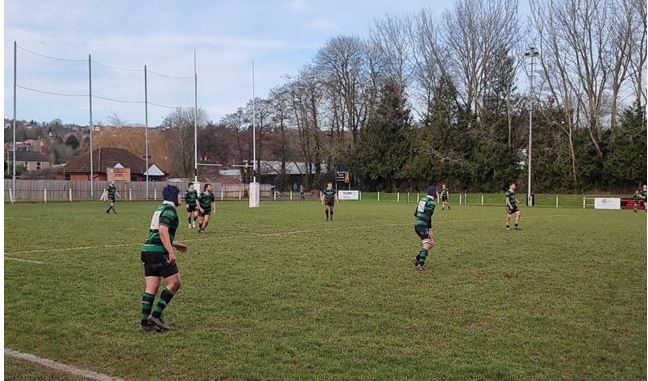Help... my 10 doesn't run straight
Does your 10 drift with the pass, taking away the space from centres and not committing defenders? Here is DAN COTTRELL’s guide to solving the problem.
THE DRIFT MYTH EXPOSED
First, let’s make sure we understand completely what’s happening when the 10 takes a pass from the 9. It’s not always a regular pass, and it’s not easy to time the run because the scrum half might be digging the ball out of a difficult place or under pressure from their opposite number.
Therefore, a little bit of a drift is not a bad thing for three reasons.
- Normally the 10 is well-marked and those few steps “offline” help them get just outside the line of their defender.
- It also creates some momentum onto the ball which is doesn’t close down as much space between the attack and defence as it would if they ran straight.
- Finally, it helps the 10 sight their own players plus opens the hips for a more accurate pass. A straight running 10 can’t see players who are arriving from deep on the outside and they have to turn their hips and shoulders more to deliver the pass.
It’s also a personal preference. Some 10s like the line because it’s easy to adjust to the pass than running straight.
DRIFT AND HIT
A little bit of a drift onto the pass is not always a bad thing. It is what happens next that often needs the most work.
The drift should happen before receiving the pass. The 10 now has to ’hit’, either with a pass to hit a runner, or a new line to pull the defence out of position.
If the next pass is likely to be short, then the 10 now cuts onto a straight line, not drifting at all. This should fix the defender in front of them.
This can sometimes mean that the defender outside the one marking the 10 still drifts, creating a larger gap in the defence.
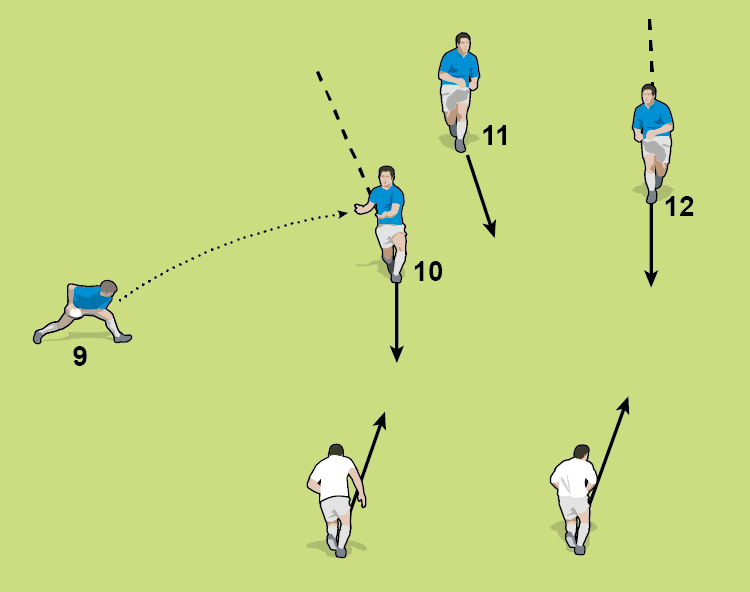
- The 10 drifts before the pass but straightens up after the pass
- As the 10 takes the ball they have their hips towards a potential long pass
- 10 can choose whether to ’hit’ a pass straight away or “hit” a straight line to take the ball up to the defence
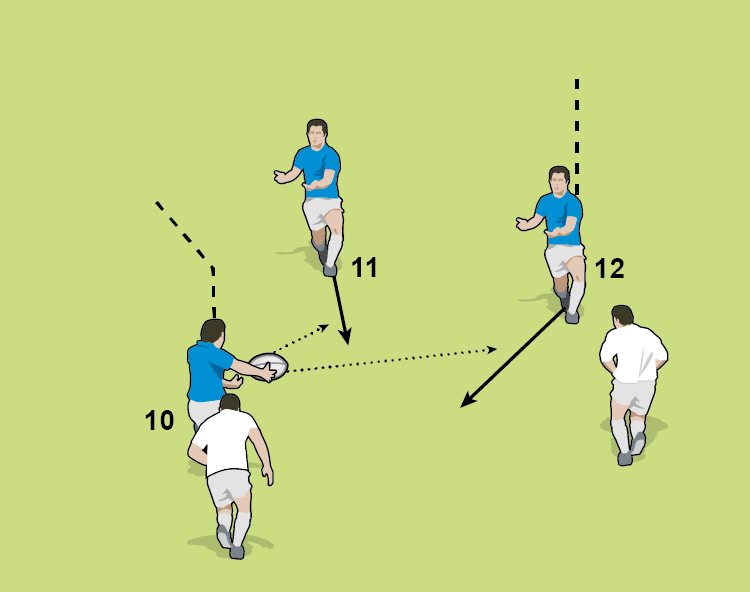
- When the 10 straightens, it should provide options to pass short to players taking angles
SWITCH PLAY ’S’ LINE
The second type of hit is the pass. If it is a wide pass, with a slight drift, the 10 is already well set to deliver an accurate pass. If it is a switch pass, then the 10 needs to run an ’S’-shape line, which means straightening up before drifting out again.
This is where many inexperienced 10s get it wrong. Instead of the ’S’ line, they just make the drift more pronounced, squeezing the space out for their centres.
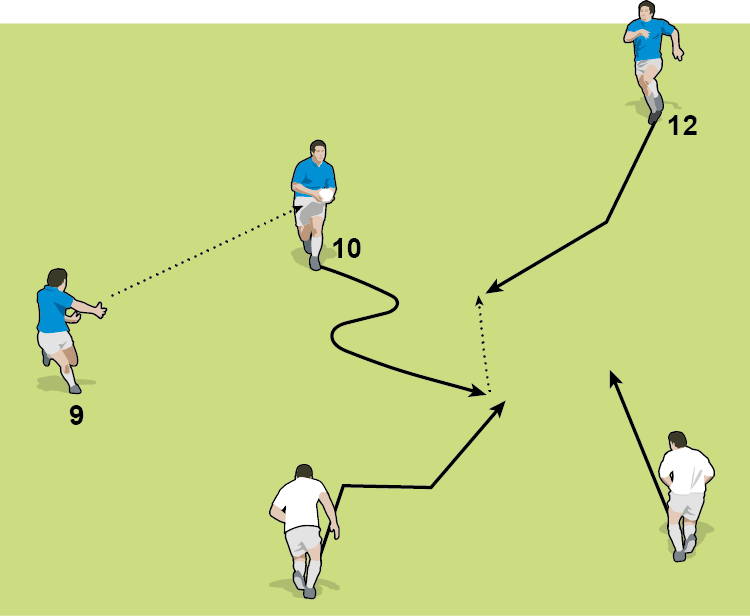
- 10 drifts out, straightens and then drifts out again to draw their defender
- 12 picks their line to attack the space left by 10
WHEN NOT TO DRIFT
When the play is down in a confined space, say 25m or less from the touchline, then 10 should not be drifting at all. It’s likely they will be using a short pass, but certainly they need to be challenging the defender in front of them to stay in their channel.
Related Files
Newsletter Sign Up
Coaches Testimonials

Gerald Kearney, Downtown Las Vegas Soccer Club

Paul Butler, Florida, USA

Rick Shields, Springboro, USA

Tony Green, Pierrefonds Titans, Quebec, Canada
Subscribe Today
Be a more effective, more successful rugby coach
In a recent survey 89% of subscribers said Rugby Coach Weekly makes them more confident, 91% said Rugby Coach Weekly makes them a more effective coach and 93% said Rugby Coach Weekly makes them more inspired.
Get Weekly Inspiration
All the latest techniques and approaches
Rugby Coach Weekly offers proven and easy to use rugby drills, coaching sessions, practice plans, small-sided games, warm-ups, training tips and advice.
We've been at the cutting edge of rugby coaching since we launched in 2005, creating resources for the grassroots youth coach, following best practice from around the world and insights from the professional game.










